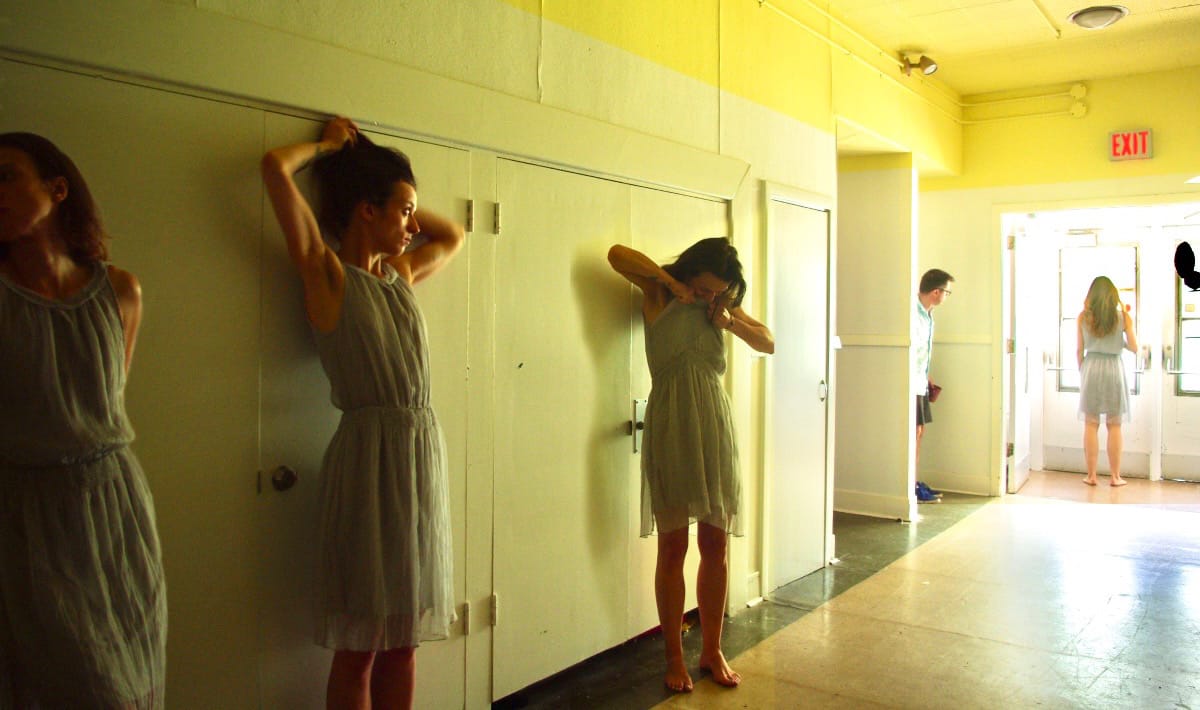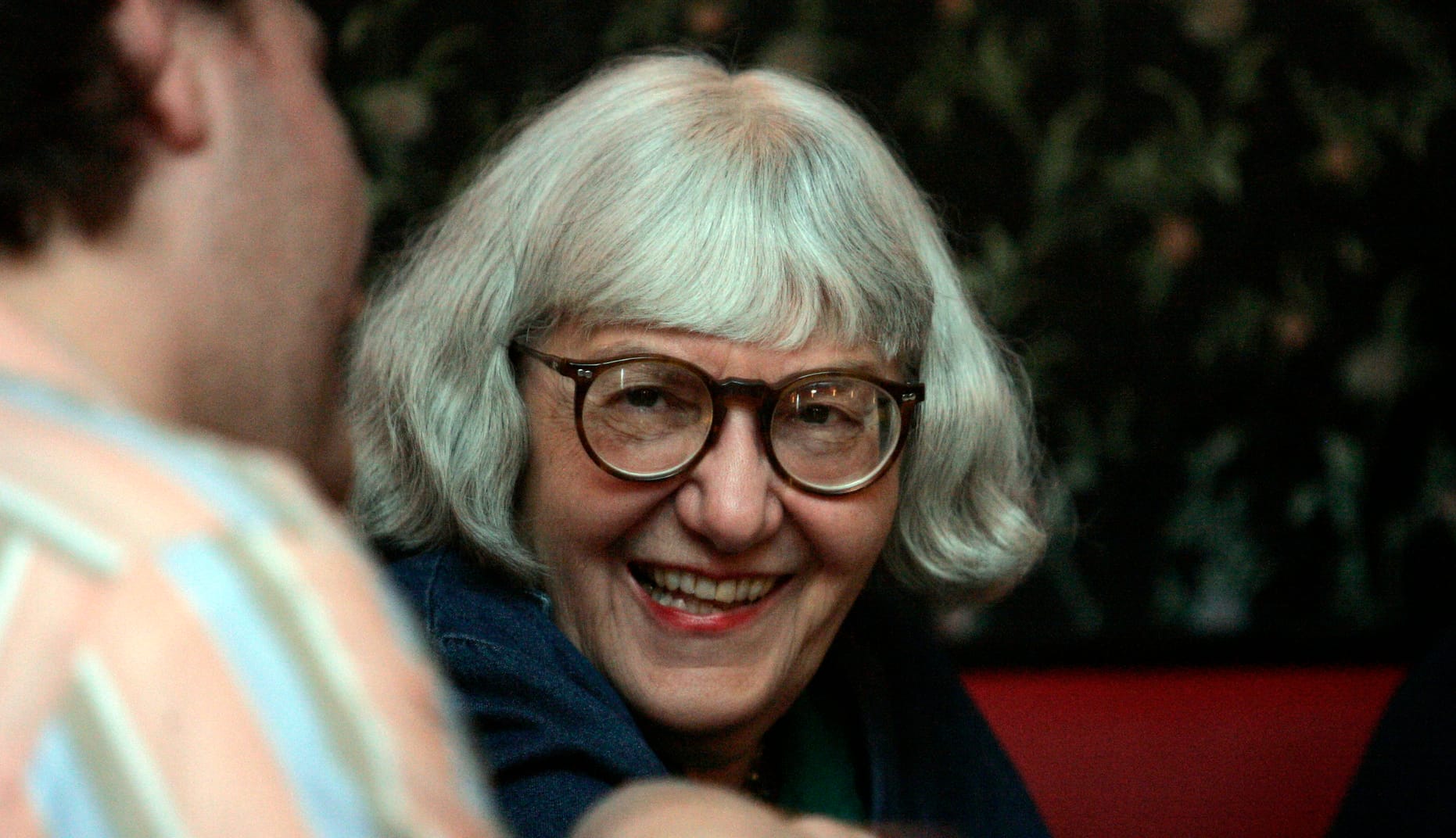Til Freedom Do Us Part
When it comes to 20th century intellectual power-couples, no two represented more disparate ideas about marriage and freedom than the chain-smoking liberationists Sartre and de Beauvoir on the one hand, and the neoliberal economists Milton and Rose Friedman on the other.

“Destined for the male from her earliest childhood, used to seeing him as a sovereign, with whom equality is not permitted, the woman who has not suppressed her claim to be human will dream...of becoming one, of fusing with the sovereign subject,” wrote the existentialist philosopher Simone de Beauvoir in 1949. “There is no other way out for her than losing herself body and soul in the one designated to her as the absolute, as the essential.” Ah, I thought, reading this description recently. Sounds like Rose Friedman.
Why in the world was I thinking about Rose Friedman, the wife and collaborator of infamous economist Milton Friedman, one of the architects of Reaganomics and the neoliberal ideas that shape so much of our economic—and, in their effects, social and political—life today?
Perhaps that very shadow of infamy has got me curious; if de Beauvoir and Sartre are the perennially cool, chain-smoking poster children for intellectual and sexual liberation, the Friedmans, their contemporaries, are the perennially frowsty aunt and uncle whose conservatism ruins Thanksgiving. Reading Two Lucky People, their 1998 co-written memoir in a café recently, I slumped down in my chair and tried to hide the cover.
Yet some of the Friedmans’ ideas—the legalization of drugs, some form of universal basic income—are now being tried out in many jurisdictions under the leadership of left-liberals and progressives. Meanwhile, more recent inquiry into the private lives of de Beauvoir and Sartre, and the details of their open relationship, has come to highlight the power imbalances inherent in their arrangement, which starts to seem less liberatory than advertised. In smaller and larger ways, these two couples continue to haunt us like a set of quarrelsome ghosts. As exemplars for two very different kinds of partnership, but also for modes of engaging with the idea at the heart of many of today’s public disagreements: freedom. How could four contemporaries, all of whom staked their intellectual careers on the propagation of freedom, understand the concept in such radically different ways, both in their political and their personal lives?
Freedom is a notoriously difficult concept to define. “Almost every moralist in human history has praised freedom,” Isaiah Berlin wrote in 1969. “Like happiness and goodness, like nature and reality, the meaning of this term is so porous that there is little interpretation that it seems able to resist.” Most of us tend to think of freedom as something akin to being able to do what we want. But it quickly becomes tricky to disentangle this idea, with its seeming crystalline purity, from the conditions that give rise to my wanting certain things, or even of conceptualizing the “I” in a particular way. It seems to imply that I am free to continue changing my mind about what I want, but the logistics of actually arranging one’s life so as to make this possible are challenging to say the least.
For existentialists like de Beauvoir and Sartre, the importance of freedom was in the redefinition of the individual as the author of the self. In early existentialist thought, not only are we born without fixed characteristics and, as human beings, without a fixed purpose (such as veneration of the divine, as earlier philosophers might have believed), but even the circumstances of our childhoods or of our present-day lives aren’t determinative of what sort of people we become. Because we always choose how we respond to what the world throws at us, there can be no excuses. We live in a state of total freedom and hence a rather terrifying total responsibility—as Sartre put it, “we are condemned to be free.”
The kind of freedom that mattered to the Friedmans was of a more external variety. Their concern was largely with negative freedom—the freedom from being prevented, by police or legislators or other authority figures, from carrying out our own designs. Rather than a frighteningly inescapable fact of human existence, the Friedmans viewed freedom as a fragile political condition that could be easily threatened or stripped away. “We are not free to buy cyclamates or laetrile, and soon, perhaps, saccharin,” they wrote in Free to Choose. “Our physician is not free to prescribe many drugs for us that he may regard as the most effective for our ailments...We are not free to buy an automobile without seat belts, though, for the time being, we are still free to choose whether or not to buckle up.”
It seems ironic to me that a couple who so feared external constraints, and viewed freedom as so easily lost, established themselves within a traditional legal marriage, complete with rigid gender roles. Despite the fact that they had met in graduate school—where Rose was one of the few women pursuing a PhD in economics in the 1940s—once they started trying to have children, she quit her job. “From the beginning,” she wrote, “I never questioned whose career came first.” Her work would be in the home. “Women’s lib had not yet made its appearance in any of its manifestations. Husbands did not share domestic activities.” At dinner parties with other economists and their wives, Rose felt obliged to sit with the women when she wanted to be sitting with the men, discussing economics.
Yet Rose found expression for her economic ideas in co-writing several books with Milton, including Freedom and Capitalism and the influential Free to Choose. The model of creative partnership that the Friedmans chose was one that presented a united front: when Rose Friedman died in 2009, the University of Chicago published on its website an obituary mentioning the many fans of “the Friedmans' views” (notably, Ronald Reagan and Margaret Thatcher). The couple co-wrote their memoirs, alternating chapters, and there is little mention of any argument or disagreement between them. For many of the works that Milton wrote on his own, Rose takes on the traditional role for wives of first reader and editor. “Fortunately,” Rose told the San Francisco Examiner, when asked how she handled being married to a Nobel Prize winner, “I was not born with a strong competitive gene, so his fame is our fame.”
De Beauvoir and Sartre, on the other hand, have generated a cottage industry of academics attempting to parse out who influenced who. Satre won the Nobel in 1964, and declined it, saying that he never accepted “official” honours. De Beauvoir was nominated in 1961, 1969, and 1973, but never won. For many years, it was popularly assumed that Sartre was the real intellectual and that de Beauvoir was simply extending or elaborating his ideas; she herself demurred when others referred to her as a philosopher.
Clearly, de Beauvoir and Sartre influenced each other; they read and discussed each other’s work relentlessly, and left records of their disagreements. In her own 1960 memoir, The Prime of Life, de Beauvoir remembers a 1940 argument she had with Sartre (before he adopted a Marxist view of the effect of social conditions), arguing that external situations do have an effect on people’s levels of freedom: “what transcendence is possible,” she asked, “for a woman locked up in a harem?” Sartre insisted that the situation did not matter. “I persisted for a long time and only yielded half-heartedly. Fundamentally, I was right. But to have been able to defend my position, I would have had to abandon the terrain of individualist, thus idealist, morality, where we stood.”
This “we” is notable—even a little heartbreaking. In a relationship whose vaunted goal is freedom, there is still something to lose in breaking ranks. Any partnership, whether intellectual or romantic, has a breaking point, and fear of losing the solid ground underfoot can keep many of us from taking risks that might ultimately benefit both. Perhaps any joint undertaking that emphasizes freedom is already a somewhat self-defeating project. The exigencies of partnership—the need for compromise, turn-taking, agreement on basic principles—tend to militate against a purely liberatory mindset.
Whether either the traditional marriage model or the open relationship model resulted in what we might call freedom for any of the parties involved is an open question. One catches glimmers that Rose feels her life might have turned out differently if she had been born later. When she quit her job to start a family, mothers who worked outside the home were a rarity, she writes. “Those few of our friends who did had a widowed mother or mother-in-law who lived with them and took the place of the mother.” With Sartre and de Beauvoir, the most worrying unfreedom is in the extreme youth of some of their paramours—sometimes sixteen- or seventeen-year-olds who were de Beauvoir’s students.
And yet, freedom is not that meaningful as an individual enterprise. Hegel wrote that “being with oneself in another” or “being at home with oneself in another” is the real condition of human freedom. Any act of creation—even self-creation—is by necessity a collaboration as we seek to define what we imagine against what is, or what we want against what we have. For a creative partnership to bear fruit, the challenge may be in seeking a version of freedom—enough autonomy for independent thinking, but enough commonality to pursue a shared end—the tense brinksmanship of which is the whole point.





